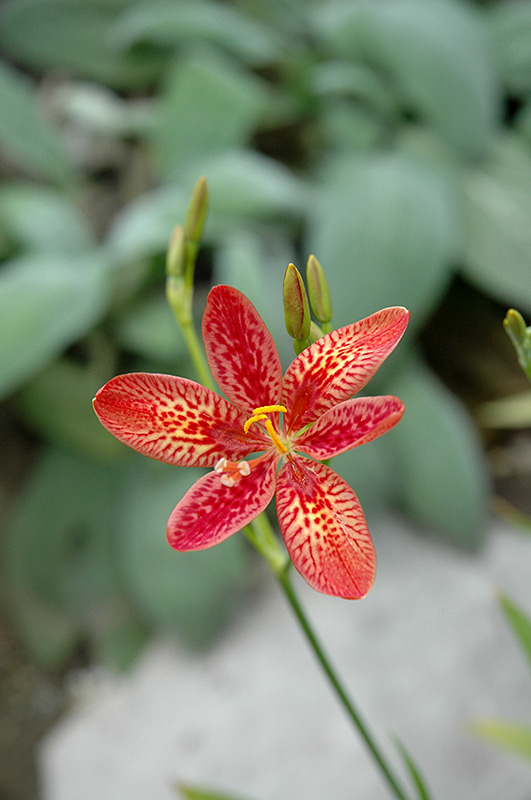PLANTFINDER
search. discover. plant.
Height: 18 inches
Spacing: 15 inches
Sunlight:
![]()
![]()
Hardiness Zone: 4
Other Names: Dazzler Orchid Iris
Description:
This is one of the more unique plants you can welcome into your garden, with its spider-like flowers mottled in purle, red and yellow; dwarf plants are ideal size for the garden; a real conversation piece for the garden club
Ornamental Features
Dazzler Candy Lily features unusual purple spider-like flowers with burgundy overtones and yellow streaks at the ends of the stems from mid to late summer. The flowers are excellent for cutting. Its attractive sword-like leaves remain green in color throughout the season. The fruits are showy black drupes displayed in late summer.
Landscape Attributes
Dazzler Candy Lily is an herbaceous perennial with an upright spreading habit of growth. Its medium texture blends into the garden, but can always be balanced by a couple of finer or coarser plants for an effective composition.
This is a relatively low maintenance plant, and should be cut back in late fall in preparation for winter. It is a good choice for attracting butterflies to your yard, but is not particularly attractive to deer who tend to leave it alone in favor of tastier treats. It has no significant negative characteristics.
Dazzler Candy Lily is recommended for the following landscape applications;
- Mass Planting
- Rock/Alpine Gardens
- Border Edging
- General Garden Use
Planting & Growing
Dazzler Candy Lily will grow to be about 15 inches tall at maturity, with a spread of 18 inches. When grown in masses or used as a bedding plant, individual plants should be spaced approximately 15 inches apart. It grows at a medium rate, and under ideal conditions can be expected to live for approximately 8 years. As an herbaceous perennial, this plant will usually die back to the crown each winter, and will regrow from the base each spring. Be careful not to disturb the crown in late winter when it may not be readily seen!
This plant does best in full sun to partial shade. It is very adaptable to both dry and moist growing conditions, but will not tolerate any standing water. It is considered to be drought-tolerant, and thus makes an ideal choice for a low-water garden or xeriscape application. It is not particular as to soil type, but has a definite preference for acidic soils. It is somewhat tolerant of urban pollution. Consider applying a thick mulch around the root zone in winter to protect it in exposed locations or colder microclimates. This particular variety is an interspecific hybrid. It can be propagated by division; however, as a cultivated variety, be aware that it may be subject to certain restrictions or prohibitions on propagation.
A NetPS Plant Finder tool

